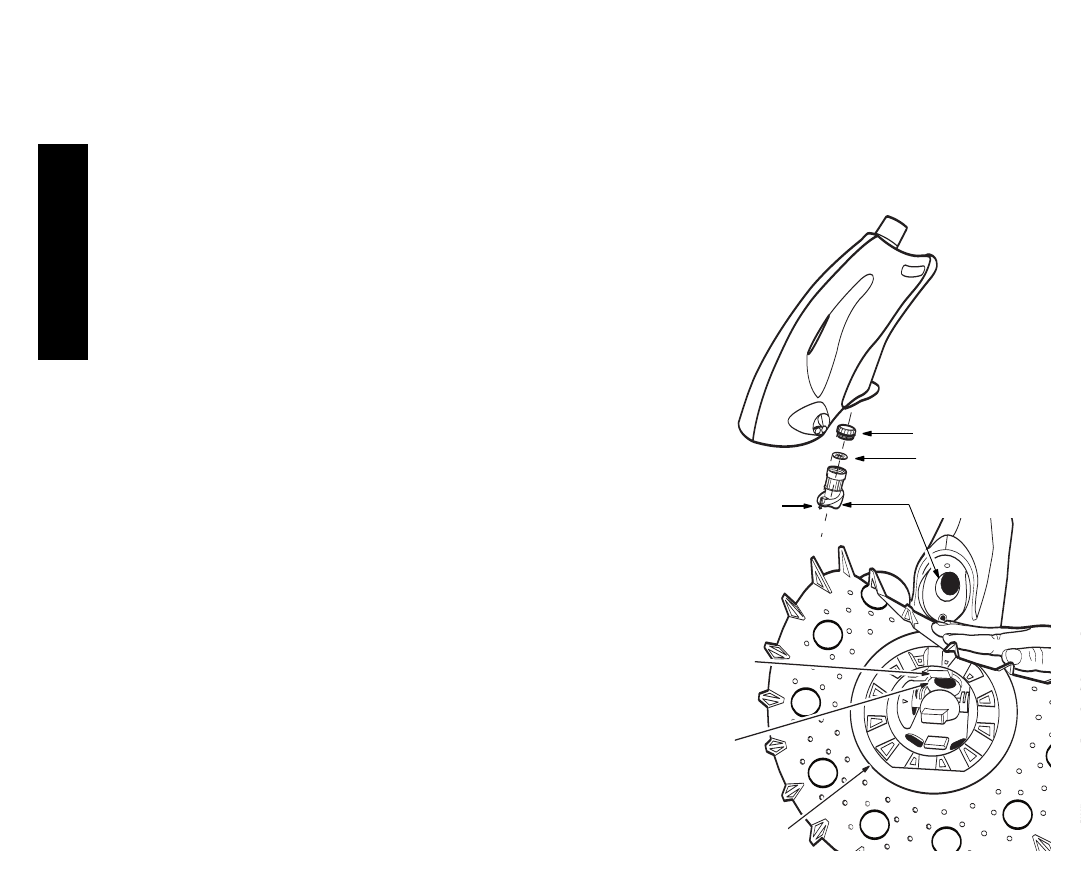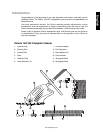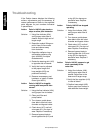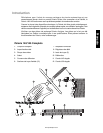
www.polarispool.com
Operation and Routine Maintenance
English
The P
olaris 140/145 cycles on/off with the
pool filtration pump vacuuming and cleaning
all surf
aces randomly throughout the pool.
The climbing ability of the Polaris is
dependent on the pool’s shape and available
water flow. It will climb better in pools without
sharp angles or curves in the transition from
the pool floor to the pool wall.
The
shoe provides traction and protects the
Polaris and pool surface. Replace it before
nubs on the bottom are worn flat.
The surface disk enables the cleaner to
climb and remove small debris. Replace
when outer edge is thin or worn.
The
bypass intake regulates the water flow
and allows collection of larger debris. Keep
intake clear of debris. Replace bypass disk
and o-ring when worn. To access, pull back
surface disk, loosen screw on bypass intake
and pull out bypass intake assembly.
Unscrew bypass cap.
Replace ball valve seat if torn, cracked or
heavily worn
To avoid magnet damage from debris build-
up, routinely wipe magnet cap pad clean
and replace when worn.
Flow Regulator
For the Polaris to operate at optimum efficiency, routinely check the inlet in the flow regulator
and clear away debris.
Emptying Pump Basket
Empty the pump bask
et regular
ly
.
The more debris in the pool, the more often the pump
basket should be cleared.
Backwashing the Pool Filter
Always disconnect the Polaris from the pool wall before cleaning or backwashing the pool
filter. After cleaning or backwashing, let the filtration system run for at least five minutes to
flush out the suction lines before re-connecting the Polaris.
Storage and Winterizing
Ne
v
er store the Polaris in direct sunlight. When storing for the winter, drain out all the water
(freez
e damage is not co
v
ered b
y the w
arr
anty). Remove all connectors and adapters from
the dedicated suction line or skimmer. Store surface disk and steering skirt flat, and hose
sections disconnected, dr
ained and str
aight.
Magnet
Cap Pad
Ball
Valve
Seat
Ball Valve
Chamber
Screw
Bypass Cap
with O-ring
Bypass Disk
Bypass Intake


















